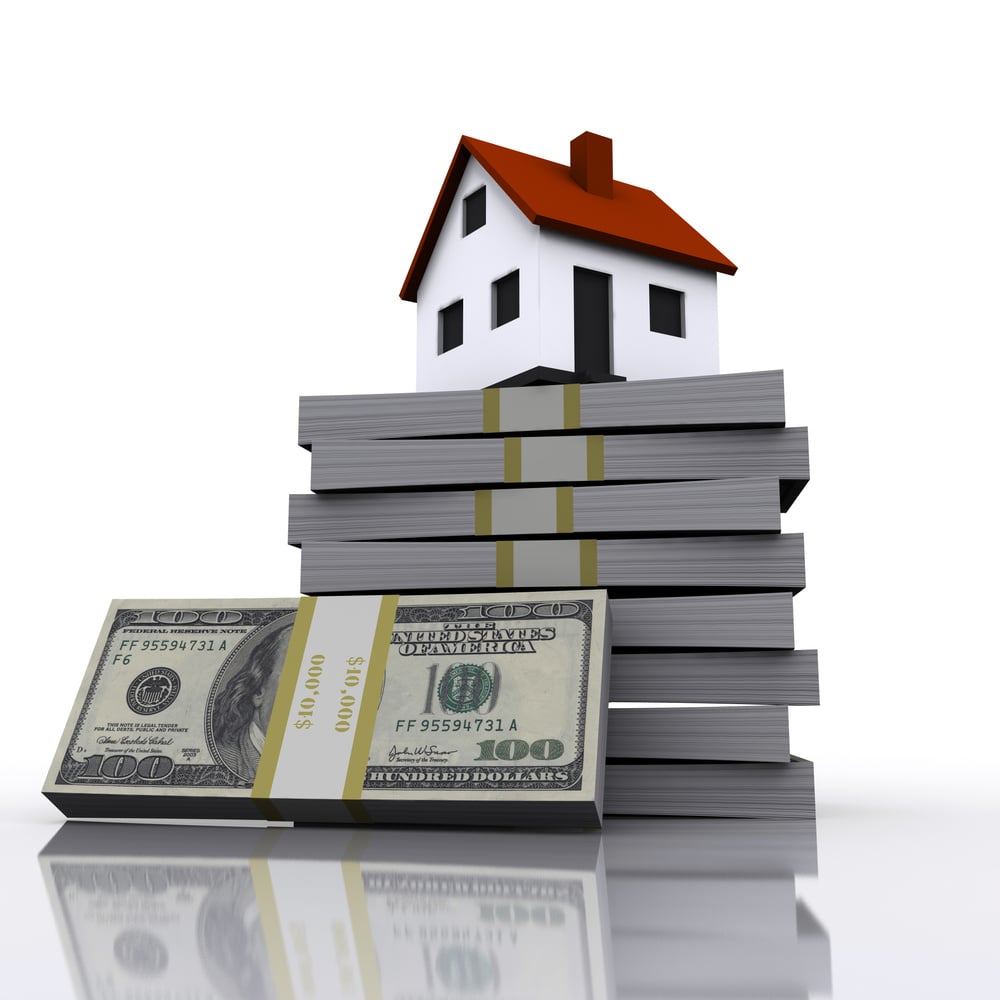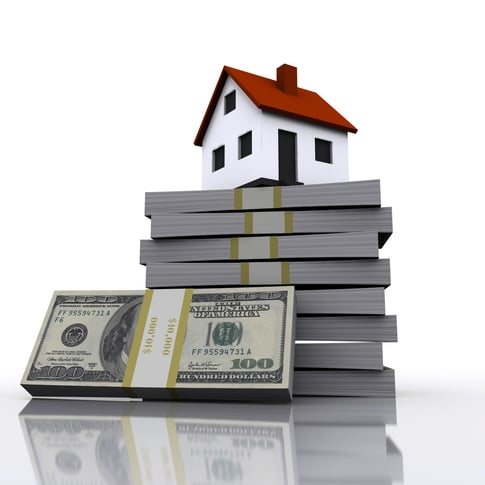Cap Rate vs. Cash-on-Cash Return: Which Real Estate Metric Is Best?
Cap rate and cash-on-cash return are two of the most widely used real estate investing metrics, but which one should you focus on when analyzing an...
5 min read
Rent To Retirement : Jun 13, 2024 2:02:50 PM

To be a successful real estate investor, you need to use numerous metrics before buying a property. From cap rate to estimated cash flow, certain calculations can help you measure the benefits and risks associated with the property you're interested in. A rental property that has high cash flow allows you to increase the value of your portfolio and build your wealth, which is why you need to do your research before making an investment.
Among the most useful measurements in real estate investing involves the capitalization rate, which informs you of the rate of return for a property. These rates vary based on the type of property you're investing in and the local market conditions. In this guide, you'll learn "What is a good cap rate?" and how to use this measurement when investing in real estate.
Simply put, the cap rate is an investment property’s NOI (net operating income) divided by the purchase price. It allows investors to quickly calculate the yearly rate of return they’re getting on an investment property and is often used to compare two real estate investments against each other.
The average cap rate in the U.S. is around 5%-9% as of February 2024. If you perform this calculation and receive a high cap rate, this indicates that the property provides a higher return but comes with more risk. While lower cap rates lead to a minimal return, this type of property is often safer to invest in. When the cap rate is high, you'll be able to return your initial investment at a faster rate. To determine which cap rate is right for your portfolio, you must identify how much risk you're willing to expose yourself to.
It's widely understood that cap rates correlate with some major economic factors. You must also consider the location of the property as well as the type of real estate you're investing in when calculating the cap rate.
Cap rates are directly influenced by the property's vicinity to public transportation, appealing destinations in the city, and highways. If your real estate investment is in a popular spot with high demand, it might have lower cap rates.
Properties that generate higher income will usually come with higher cap rates. However, you should also consider your property expenses. If your expenses effectively wipe out your income, this can negatively impact the property's cap rate.
When you invest in real estate, the asset class can play a significant role in determining what the cap rate will be. For example, commercial real estate comes in three distinct classes. Class A buildings are the best ones on the market. They have high rent rates and upscale amenities. In most cases, a Class A building will come with a low cap rate because of its high value.
Class C properties have significantly higher cap rates because they are usually situated well outside of the city and are in poor condition. While these properties are functional, they aren't appealing, which is why they come with higher risk. You may need to perform major repairs and renovations before you can start marketing the property to potential tenants.
Some property types come with more risk than others. For example, investing in a hotel is often riskier than putting your money in a single-family rental. Hotels tend to perform well when the economy is strong and people have disposable income.
On the other hand, a poor economy can weaken the hotel's viability. Riskier properties often have higher cap rates. Since multifamily properties and single-family homes are safer investments, they might have a lower cap rate.

You can calculate cap rate in seconds by using Rent to Retirement's Rental Property Calculator. This calculator can measure cash flow, cap rate, cash-on-cash return, and much more! Just enter a property's purchase price, down payment, interest rate, and expenses. Once the info has been submitted, you'll instantly receive a full analysis that can help you make sound investment decisions.
Cap rates reveal a lot about a potential real estate investment. They're also easy to calculate. The formula for cap rate is as follows:
Cap Rate = NOI / Property Value
Before you can perform this calculation, you must identify the property's net operating income (NOI) and the amount you need to spend to purchase it. To determine the property's NOI, estimate its annual revenue before subtracting the total operating expenses. It's also essential that you consider the property's vacancy rate. Never assume that your rental real estate investment will have a perfect occupancy rate. Adjust your NOI to account for this factor.
Once you have the property's net operating income, it's easy to calculate the cap rate.
Here's an example of a cap rate calculation for a turnkey rental property:
When you invest in any type of real estate, you must weigh the benefits and risks of buying the property. By identifying the property's cap rate, you can effectively predict the risk of making the investment. Higher cap rates usually result in riskier investments but properties with high cap rates are often more affordable.
Once you calculate the cap rate, consider your long-term financial plans. Does the investment property meet your needs and the level of risk you're willing to accept? Cap rates are just one tool that can help guide your investment decisions. While cap rate is important, other metrics like cash-on-cash return, cash flow, and return on equity MUST be calculated before making an investment. If you need help finding the best investment property for your goals, schedule a free consultation with our investment experts today!
There's no definitive answer to this question. The cap rate that's best for you depends on the type of investor you are and what kind of property you wish to add to your portfolio. Your property's cap rate isn't the same as its total ROI. It allows you to discover how risky the investment property is and how long it will take for you to recover the entirety of your initial investment.
Depending on the amount of risk you can tolerate, a good cap rate might be anywhere from 4%-10%. A higher cap rate usually equates to more risk. Keep in mind that high cap rates often result in a lower upfront investment. If you purchase a property with a low cap rate, it should have a higher property value, which can be beneficial when you eventually sell it.
If the investment property you're interested in has a 7.5% cap rate, there are several things this percentage indicates. It informs you of the ratio between the property's NOI and its current market value, which is 7.5%. The cap rate displays the amount of money the property is expected to earn in a year based on operating costs, market value, and revenue. A 7.5% cap rate isn't automatically good or bad.
Let's say you purchase a home that costs around $1 million and comes with an NOI of $75,000. In this scenario, you'd end up with a 7.5% cap rate. Compare this cap rate with other properties in the area to determine if it's a good investment. If you buy a $300,000 property with a cap rate of 7.5%, your annual NOI would be $22,500. A $500,000 property with this cap rate would generate $37,500 in net operating income each year.
A cap rate can be bad if it's too low or too high. A 4% cap rate may be just below acceptable for many investors.
To determine if you have a good cap rate, consider factors like rent growth, unemployment, interest rates, and property location. For example, higher interest rates often cause cap rates to increase. Economic issues in the area can also push cap rates higher.
With a thorough understanding of the intricacies of purchasing investment properties and a comprehensive strategy in place, aspiring real estate investors can move forward with confidence and informed decision-making as they embark on their real estate investment journey in 2024 and beyond. For more insights into real estate investing, visit Rent to Retirement at (https://www.renttoretirement.com/).

Cap rate and cash-on-cash return are two of the most widely used real estate investing metrics, but which one should you focus on when analyzing an...
There are so many terms that get thrown around when evaluating rental properties. For some they are second nature, but for others they are the...

NOI (net operating income) is one of the fastest and easiest ways to determine whether you should buy an investment property. In this guide to NOI...